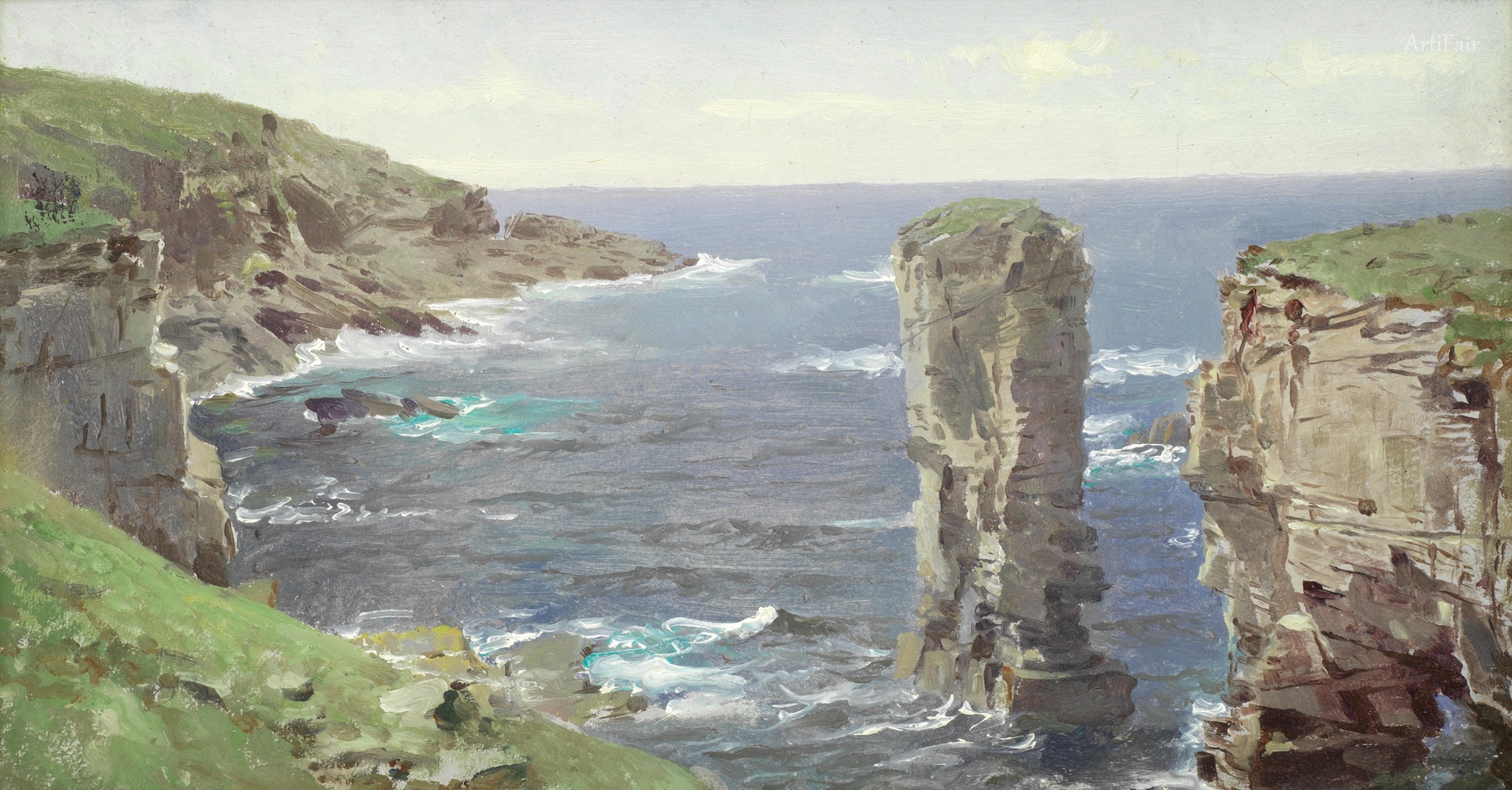
Sanat Değerlendirmesi
Eser, muhteşem bir kıyı manzarasını sunarak, huzur ve vahşi doğa hissi uyandırıyor; bu, Cornwall boyunca pittoresk kayalıkları anımsatıyor. Canlı smaragdın ve azur mavisinin darbe vuruşları kabarık dalgaları yerleşik kayalara çarparken görünüyor, ve kara nazikçe denize doğru eğiliyormuş gibi, doğanın yalın güzelliğini sergiliyor. Ufukta yükselen kayalık yapı, sahneyi daha dramatik hale getiriyor; aşınmış dokusu sonsuz gelgitlerin ve rüzgârların hikâyelerini anlatıyor, izleyiciyi yıllar boyunca dayanmış olduğu yüzyılları hayal etmeye davet ediyor. Işığındaki yumuşak pastel sarısı ve beyazı manzarayı okşuyor; güneşin nazik kucaklamasını taklit edercesine huzur verici bir parıltı sahneye hayat veriyor.
Bu renk ve dokuların harmonisi içinde, taze tuzlu havayı hissetmek ve dalgaların ritmik sesini duymak mümkün. Neredeyse zamanın burada durduğunu hissediyorsunuz—bu an, doğanın güçlü sükunetini yakalarken, tarihi bir arka planda sesleniyor. William Trost Richards, keskin gözlem yeteneği ve teknik zarafetiyle 19. yüzyıl Amerikan manzara hareketinin ruhunu kapsar. Hem detayların hem de atmosferin draması, doğal dünyanın bozulmamış güzelliği için bir özlem duygusunu destekliyor; sanki sanayileşmenin yavaş yavaş Amerika ve Britanya'nın manzaralarını dönüştürmekte olduğunu biliyormuş gibi.